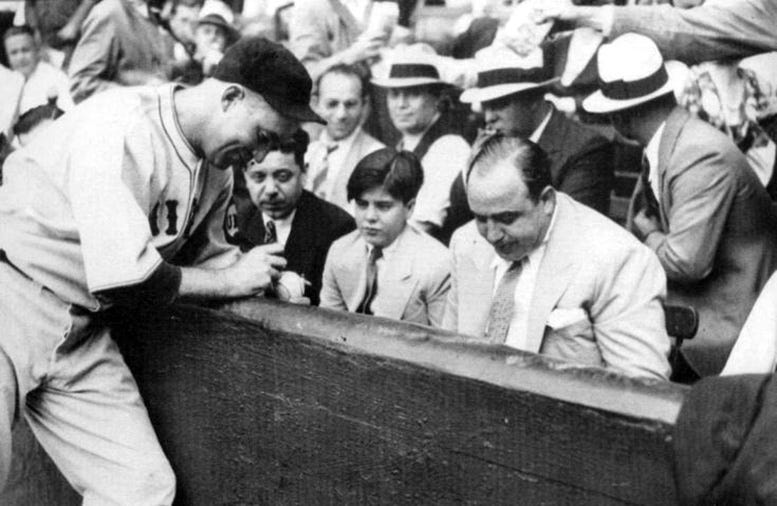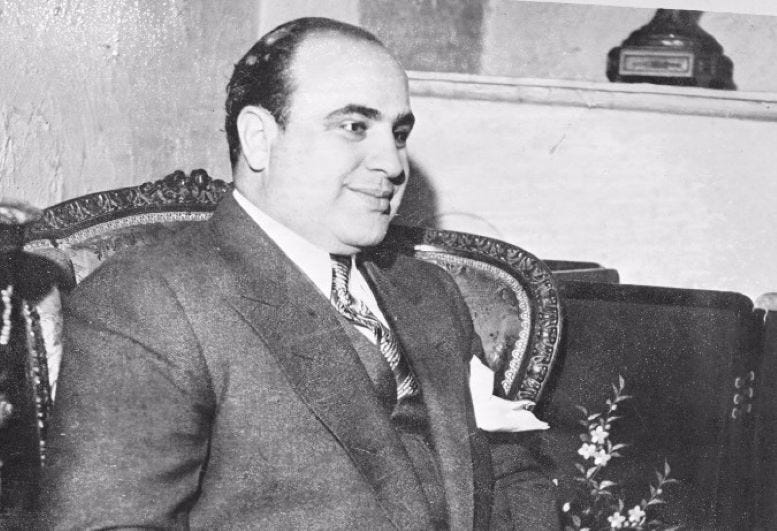Al Capone in Miami – Part 1 of 4
A four part series on Al Capone's time in South Florida. Part one shares Capone's arrival in the Magic City and his acquisition of his South Florida respite on Palm Island in 1928.
The legacy of Al Capone holds many labels including: bootlegger, gambler, mob boss and murderer. His legacy also includes a fascinating and turbulent time in South Florida. There are many stories and urban legends that have had Capone everywhere during his time in Miami and Miami Beach. These stories have become more grandiose with time.
This is the first installment in a four part series on Al Capone’s time in South Florida and the reasons for him choosing Miami Beach as his home away from Chicago. While many of the stories that are still shared today about Capone are fascinating, this series will focus on what has been confirmed about the man and his time in Miami.
Capone Needed a Change from Chicago
Al Capone was on top of the world in 1927. Many of his enemies had been eliminated and he was considered the most feared and revered gangster in Chicago. It was estimated that his outfit made $108 million in 1927. However, there were a couple of very good reasons Capone ended up choosing to take a sabbatical from Chicago.
Joe Aiello was a rival who possessed a large ego and even grander ambitions. When Capone saw to it to that Aiello’s business partner, Tony Lombardo, got elevated to presidency of the Unione Siciliana, Aiello became bitter. Aiello thought he deserved that post and was disappointed enough to seek retribution on Capone.
In May of 1927, Aiello offered $50,000 to anyone who would kill Capone. There were several hitman hired, but Capone was tipped off on each plot and the hoods hired for the job were the ones that ended up dead. Finally, Capone’s men caught up with Joe Aiello in November of 1927 when he was arrested for conspiracy to commit murder. A conspiracy where Capone was the target.
Considering that Capone’s gang found him in a detective bureau on the north side of town, Aiello was able to beg for his life and promised to leave town and never return. Capone agreed to his plea for peace and Aiello and his family left town immediately. Joe Aiello kept his promise for a little while.
Once again, Capone felt invincible until his deal with the Mayor of Chicago, Big Bill Thompson, changed dramatically. Thompson let Capone run his business unfettered for most of his term as mayor. However, Thompson believed he would make a good successor to Calvin Coolidge as the next nominee for President of the United States on the Republican Ticket in 1928. He knew that his chances would be compromised if he didn’t begin to appear tough on the criminal element in Chicago.
Thompson brought Mike Hughes back as police chief and Hughes began a personal mission to chase Capone out of Chicago. In December of 1927, Capone got the message and announced that he would leave for Saint Petersburg, Florida to sell property he owned. While Capone stated he would not be back until after the holidays, Chief Hughes made it clear that he was not welcome to ever come back.
Not Welcome Anywhere
His announced trip to Saint Petersburg was just a misdirection. Capone ended up going out west with two bodyguards. His first stop was Tijuana, Mexico and then he headed north to San Diego. His next stop was Los Angeles where he and his bodyguards got a suite at the Biltmore Hotel.
Capone’s visit to Los Angeles was reported in the LA Times and caught the attention of Los Angele’s police chief, who dispatched his toughest detective to send the message that Al Capone was not welcome in LA. While Capone was insulted by the message, he didn’t want any trouble in LA, and chose to head back to Chicago.
The reporters continued to follow Capone on his journey back to the Midwest by train. Capone got an unwelcome reception at every stop. The police were in force at every train station, making it clear that none of the cities along his route home were suitable places for Capone to visit.
Once Capone arrived close to home, he and his men were stopped in Joliet and arrested for possession of concealed weapons. Once he was released and paid his fines, he left for his home on South Prairie, only to be greeted by more of Chicago’s finest. The message was clear, Capone needed to find another home. At least for the time being.
Keep reading with a 7-day free trial
Subscribe to Miami History to keep reading this post and get 7 days of free access to the full post archives.




